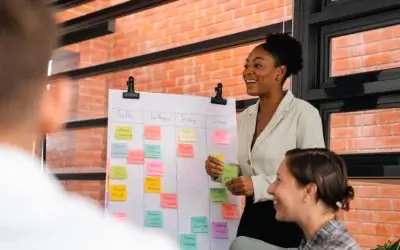For most, meetings are a necessary part of the work we do. They can be productive, collaborative places where people work together to move a business or project forward, or they can be time-consuming, soul-crushing events that take up everyone’s time and stop progress.
Many complain that they haven’t done any “real work” because they’ve been in too many meetings. In reality, meetings should be part of the “real work.” If they aren’t, something needs to be fixed.
Tips to Hold an Amazing and Effective Meeting
While the following tips are primarily for those that are convening the meetings, such as a team lead, project manager, etc., with a bit of tweaking, these tips can be used for most business meetings because they are based on best practices that should be part of a company’s culture.
1. Have a Clear Objective
Do you need the meeting to develop new ideas, get information, or make decisions? Or is it a mix of all of the above?
If you are unclear about what you want to accomplish, you can be sure it won’t be achieved. The essential item for a meeting to go well is to have a clear goal and agenda.
2. Invite the Right People
Only invite those necessary for the meeting and have the relevant expertise or decision-making authority. This will help keep the meeting focused and productive.
3. Don’t Be Late
People who are late can waste 5 to 10 minutes, if not more, of the meeting time or, in many cases, cause the meeting to run long. People who show up on time shouldn’t have to wait for those that are always late.
How to fix it? Start the meeting on time. When meetings start precisely when they are supposed to, it sends a clear message to those who are late and builds a reputation for being on time.
4. Prepare for Follow-up Questions
The worst thing in a meeting is not to answer a simple follow-up question. It’s easy to get caught up in making slides for your weekly update deck and not think about how to answer follow-up questions. Be able to explain the “why,” “how,” and “so what” of what you know.
Set aside time to think of questions attendees might ask about the information you’ve shared. Prepare answers to those points so that you are ready if they come up. If a question isn’t asked, it doesn’t mean you wasted time preparing. You’ve simply learned more about what you were talking about, which will be helpful in future discussions.
5. Encourage Participation
Encourage participation from all attendees, and create an environment where everyone feels comfortable sharing their ideas and opinions. This will help ensure that all perspectives are considered.
6. Continuously Evaluate and Improve
After the meeting, evaluate its effectiveness and identify areas for improvement for future meetings. This will help you continually improve your meetings’ quality and productivity.
7. Avoid Multitasking at All Costs
One of the worst things you can do in a meeting is to try to do more than one thing at once. Typing is annoying to your participants and makes it harder for them to pay attention to what is being said. You’re more likely to miss a question meant for you or look like you don’t care about what other people have to say. Expect to avoid answering emails while in a meeting. Unless essential for the meeting, turn off alerts on your email so that it won’t distract you.





0 Comments